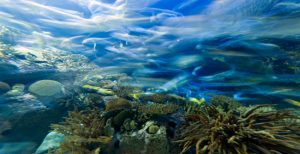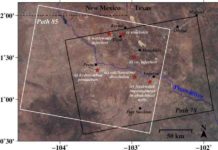
Researchers have discovered a ‘bizarre’ microorganism which plays a key role in the food web of Earth’s oceans.
Researchers from Spain’s Institute of Marine Sciences (ICM-CSIC), alongside colleagues at the University of Bristol in the UK, discovered that symbiotic phytoplankton capable of fertilising the ocean with nitrogen ‘fertilizer’ evolved back in the Cretaceous at a time when the oceans were nutrient deprived.
This study, which used data from the Tara Oceans circumnavigation expedition, is published in Nature Communications today [22 March].
The cyanobacterium which the researchers have discovered is unique because it has no photosynthetic capabilities – a trait commonly associated with these microorganisms. Instead, its sole purpose is to provide nitrogen to a more complex cell host.
This ‘slaving event’ evolved around 90 million years ago towards the end of the Cretaceous period, when the oceans were starved of nutrients.
While nitrogen is hugely abundant in the atmosphere, most organisms can’t breathe nitrogen, instead relying on bacteria to transform atmospheric nitrogen into bioavailable nitrogen – critical for growth and survival in the marine food web.
Marine scientists have known that bioavailable nitrogen is provided by cyanobacteria, but the new findings take this knowledge one step further, by identifying the intimate relationship of this marine nitrogen factory which is formed by a single-celled alga (prymnesiophyte) and the cyanobacterium UCYN-A.
Dr Silvia G. Acinas, from ICM-CSIC in Spain, led the study and said: “This is a very important symbiotic system in marine environments because they are globally distributed, playing a significant role in today’s nitrogen and carbon marine cycles.”
Dr. Patricia Sánchez-Baracaldo, from the School of Geographical Sciences at the University of Bristol, added: “A stage of scarce nutrients in the ocean could have led to the establishment of the symbiotic relationship between the algae and the cyanobacteria back in the late Cretaceous, after the oceans had been deprived in nutrients.”
This research has been made possible thanks to the metagenomes and metatranscriptomes dataset obtained from the Tara Oceans oceanographic expedition.
Several international laboratories including the University of Bristol (UK), VIB/VUB/KU Leuven (Belgium), Aix-Marseille Université (France), Centre National de la Recherche Scientifique – CNRS (France), Genoscope (France), European Molecular Biology Laboratory – EMBL (Germany) and the University of California (USA) have participated in this study.
Reference:
‘Cyanobacterial symbionts diverged in the late Cretaceous towards lineage-specific nitrogen fixation factories in single-celled phytoplankton’ by Francisco M. Cornejo-Castillo et al in Nature Communications. DOI:10.1038/ncomms11071
Note: The above post is reprinted from materials provided by University of Bristol.










